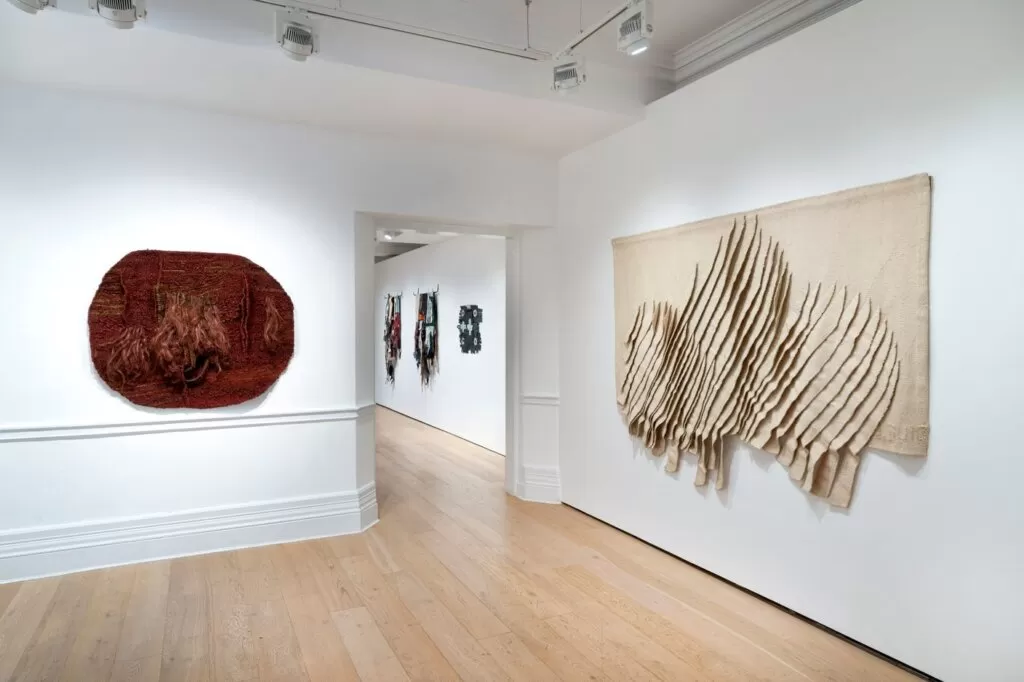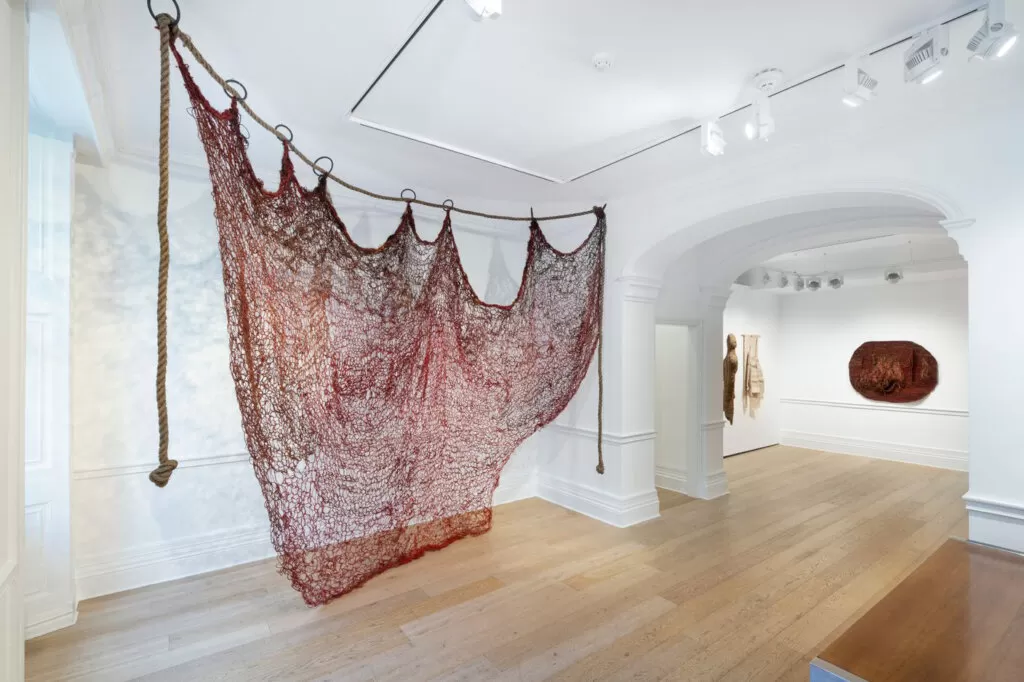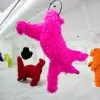Antigone: Women in Fibre Art
31 January–18 March 2023
Richard Saltoun Gallery
41 Dover St
Mayfair
London
W1S 4NS
Richard Saltoun Gallery is delighted to inaugurate the 2023 exhibition programme with Antigone: Women in Fibre Art, a group show celebrating the rich Eastern European textile art tradition. Focusing on gallery artists Jagoda Buić – who recently passed away – and Barbara Levittoux-Świderska, the exhibition will situate their pivotal fibre sculptures alongside rare works by two other pioneers, Magdalena Abakanowicz and Ewa Pachucka, and new work by a younger generation, Anna Perach and Egle Jauncems.

The exhibition title honours Buić – who recently passed away – referencing her work named after the heroine of Sofocle’s Greek tragedy_,_ who confronted archaic laws in the name of a modern moral sentiment. Like Antigone, Abakanowicz, Buić, Levittoux-Świderska, and Pachucka opposed the traditional view of textiles as specifically feminine, decorative, and low in the artistic hierarchy, elevating them to fine art. In the 1960s and 1970s, they revolutionised the millennia-old tapestry tradition to a point that a new term was coined to describe it: fibre art. Their weaved, knotted, plaited, coiled, and even braided creations that forsake flatness and embraced tridimensionality, expanding freely in the space.
The feminist movements of the time contributed greatly to the rise of fibre art on the international scene. Indeed, many of the most prominent fiber artists are women.
Magdalena Abakanovicz (1930–2017) and Barbara Levittoux-Świderska (1933–2019) were the most prominent members of the Polish Textile School, a post-war generation of artists who incorporated locally sourced materials in their practice while also responding to repressive ideology of the country’s socialist regime. Abakanovicz’s earliest works were monumental hanging textiles, which she named ‘Abakans’, and functioned as both objects and spaces. Quite different and less dense, Levittoux-Świderska’s large-scale, cascading fibre installations used natural fibres woven or glued with synthetic materials such as wire, plastic or industrial scraps.

Together with Abakanowicz and Levittoux-Świderska, Croatian artist Jagoda Buić (1930–2022) was credited with pioneering innovative textile forms in contemporary arts. Known for her vast installations made out of textile cords, hemp and wool, and experiments with unusual surface textures, Buić was also a successful costume and set designer for opera, ballet, theatre and film productions. By dispensing with the traditional loom, she gave her works – which she called ‘tapestry situations’ – a new and powerful corporeality, boldly venturing into space and creating large-scale environments.
Notably, Buić featured in MoMA’s pivotal 1969 exhibition ‘Wall Hangings’ alongside 27 other independent weavers who adopted off-loom techniques and operated in the world of art, including Abakanowicz and another member of the Polish School: Ewa Pachucka. Pachucka (1936–2020) crocheted distinctive three-dimensional forms made of hemp cords, jute, and sisal with openwork decorations. Some resembled vertical architectures, while others – known as the ‘Clothing’ series – resembled garments with human forms and bodily character, reminiscent of artificial skins.

The connection with the human body returns in the work of Anna Perach (b.1985), who creates colourful wearable sculptures – using a technique called tufting – and performances that examine the dynamic between personal and cultural stories. Perach is particularly interested in how our private narratives are deeply rooted in ancient folklore and storytelling.
Her work interweaves female archetypes into sculptural hybrids in order to examine ideas of identity, gender, and craft. Equally colourful, the wall-hung textile assemblages of Lithuanian artist Egle Jauncems (b.1984) express her ongoing investigations into male power, the history of painting, and the relationship between truth and appearance. The principal aspects of Egle Jauncems’ practice develop through a continuous search for the parallels between the rational and irrational, contemporary and primitive, and the relevant and irrelevant. The starting point of her visual analysis often revolves around found imagery, pieces of text and overheard conversations. Later, she transforms these fragments – through the act of painting, drawing and stitching – into objects, or even beings, of pathos and irony
©2023 Richard Saltoun Gallery





